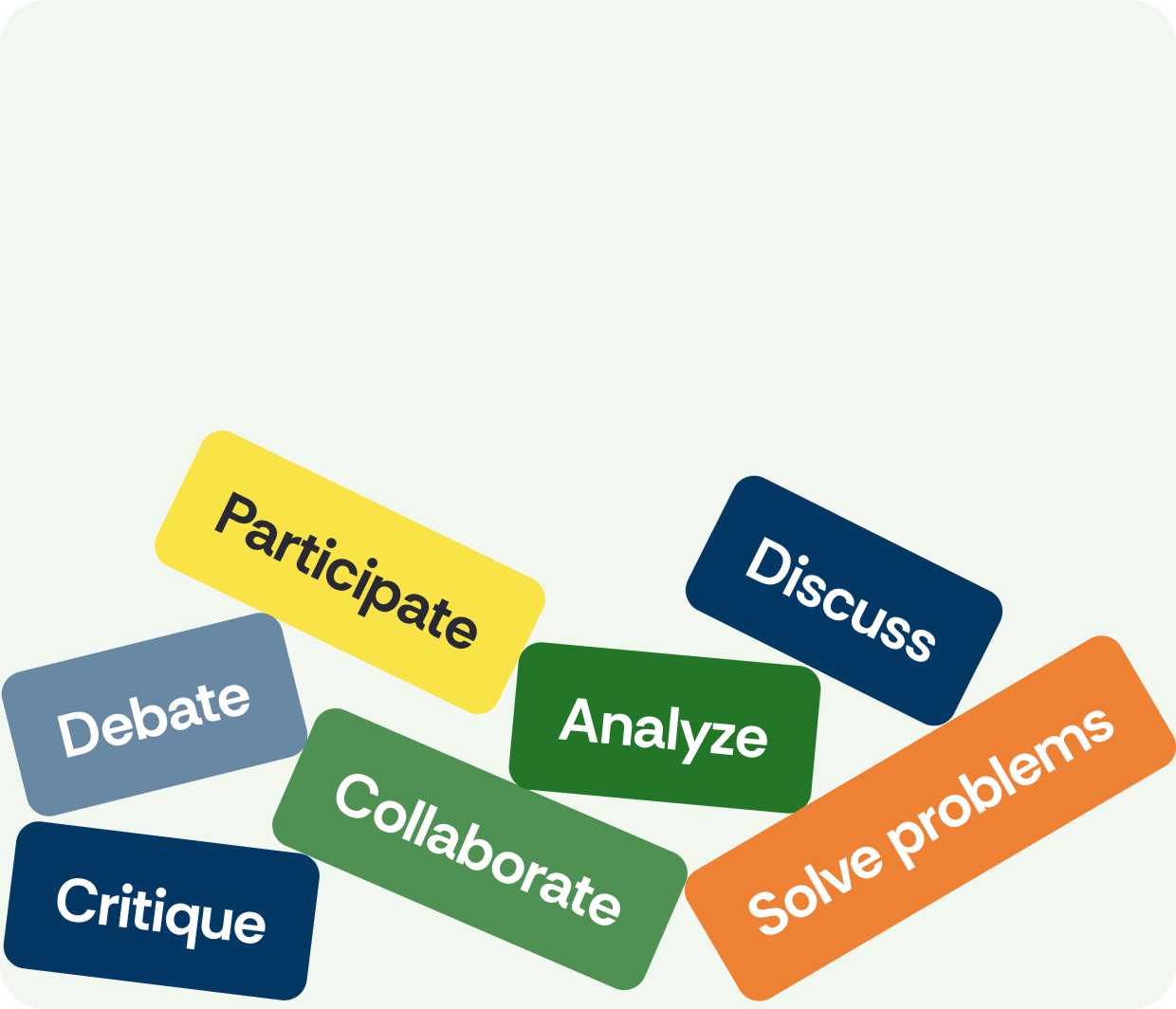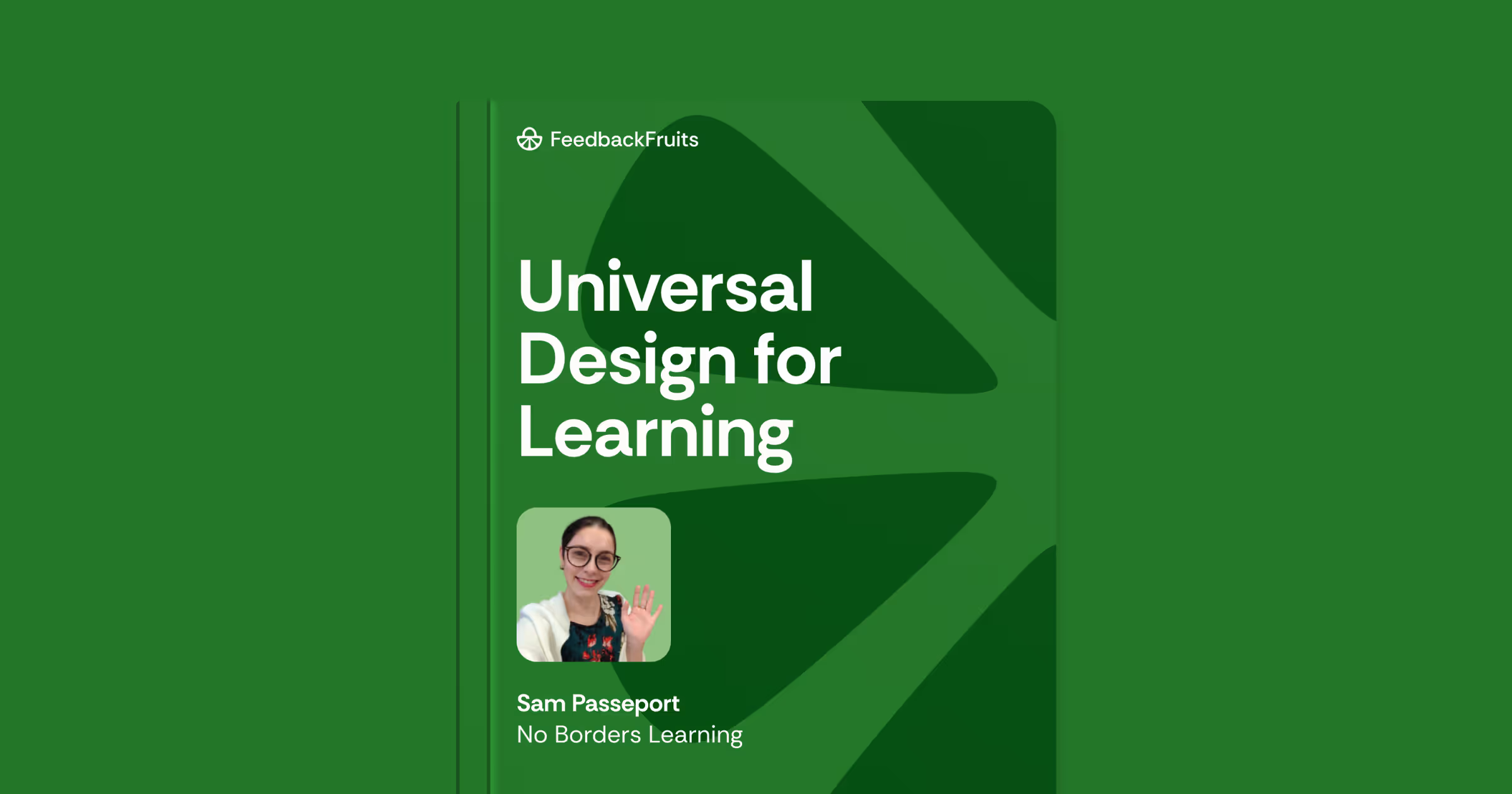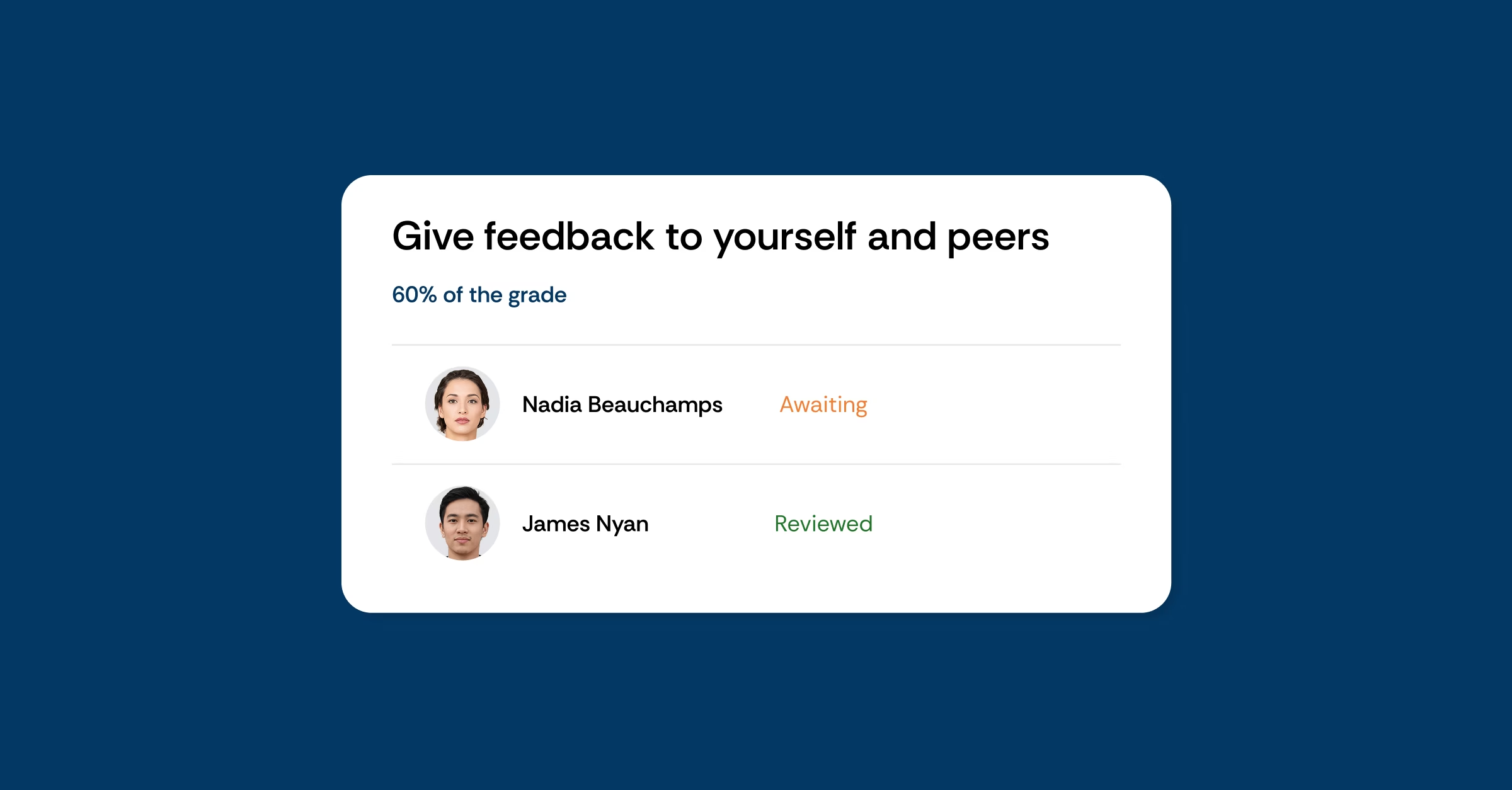Critical Pedagogy supported by FeedbackFruits
Cultivate a democratic, participative, and truly dialogical learning space with a critical pedagogy

What is critical pedagogy for learning?
Critical Pedagogy is an approach that centers students' agency and democratic participation in the classroom. In Critical Pedagogy, teachers are positioned as co-learners and together with students, they engage in active problem-posing and problem-solving through emancipatory dialogues.

Why critical pedagogy?
Critical pedagogy is a form of engaged pedagogy that interrogates systems of oppression in education such as authoritative and standardizing approaches that tend to dehumanize students (and teachers) – referred to as the Banking Model (Freire, 1970). Through Critical consciousness is the development of critical awareness through reflection and action, and critical pedagogy proposes to equalize the power between students and teachers and supports students’ development of emotional intelligence, critical thinking skills, and civic engagement.
Book a demoStrengthen life-long competencies
Critical Pedagogy not only improve academic performance but also influences students’ development of critical thinking skills and civic engagement.

Hunaepi, et al., 2024.
Critical Pedagogy and Student Learning Outcomes:A Systematic Literature Review
Nurture engagement and social awareness
Critical pedagogy focuses on authentic learning in assessments while also acknowledging the difficulties of reconciling these ideals with student expectations for success.

Serrano et al, 2017.
Critical Pedagogy and assessment in higher education: The ideal of ‘authenticity’ in learning
Student-centered approaches
When co-creating with students, we are centering their agency, encouraging mutual respect, and empowering them to actively shape their educational experience.

A. Cook-Sather, et al., 2014
Engaging Students as Partners in Learning and Teaching

How does FeedbackFruits support critical pedagogy?
FeedbackFruits allows the seamless integration of various critical thinking tasks for students to engage with in different ways. For example, students can analyse a video’s symbols or inquire into a concept illustrated in an interactive image. They can also deepen their criticality outside of the physical classroom by continuing to dialogue with peers and teachers through discussion groups. Finally, they can contribute their own critical views and receive formative feedback to refine their understanding of key concepts.
Get started with critical pedagogy for learning using our pre-made learning design templates
These templates—designed by experienced educators—offer proven structures for implementing critical pedagogy. Simply select a template, customize it, and launch engaging activities in minutes.
Browse all templatesCritical pedagogy, directly within your LMS
FeedbackFruits integrates seamlessly with your Learning Management System, making it simple to incorporate critical pedagogy activities into your existing courses. Whether you teach online, hybrid, or face-to-face, FeedbackFruits ensures that activating student participation is just a few clicks away—no additional overhead, no steep learning curve.





Explore our free resources about critical pedagogy

Universal Design for Learning: a guide
The checklist covers 6 key areas (structure and processes, curriculum design and delivery, assessment and feedback, community and belonging, pathways to success, technology adoption).
Read more
Using active feedback to develop critical thinking in students
What is the difference between differentiated and personalized learning? And how can institutions optimize them in hybrid and online classrooms? These questions will be discussed in this article.
Read more.avif)
Fostering a sense of belonging with inclusive pedagogy and AI
This webinar discusses the challenges, opportunities, and best practices for integrating AI tools to foster inclusive learning environments.
Read moreSee what FeedbackFruits learning activities can be used to support critical pedagogy
Critical pedagogy is hard. FeedbackFruits makes it easier.
Unlock the full potential of critical pedagogy and more with the Learning Design System.
Explore the Learning Design System










